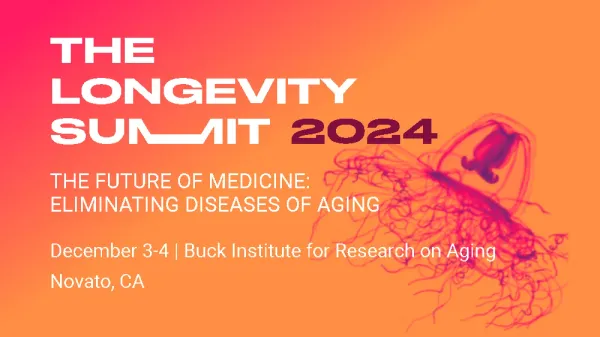Radical Life Extension in the 21st Century: A Distant Dream?
This in-depth article explores the challenges and limitations of radical life extension, highlighting recent research that suggests human lifespan may not increase significantly in the 21st century.

In the past century, advances in healthcare, public policy, and societal well-being led to one of humanity’s most profound achievements: a dramatic increase in life expectancy. However, as we stand in the 21st century, researchers are now asking whether the extraordinary gains seen in the past are replicable, or whether we have reached an upper limit in human longevity. Despite optimistic predictions by futurists and proponents of medical advancements, a growing body of research suggests that radical life extension, as defined by substantial increases in life expectancy, is unlikely within this century.
This article delves into the recent findings that question the plausibility of extending human life dramatically and highlights the scientific, social, and economic implications of this phenomenon.
The 20th Century Longevity Revolution
To understand the current debate surrounding life expectancy, it’s essential to first look back at the longevity revolution of the 20th century. By the late 1800s, life expectancy was often shockingly low—between 20 and 50 years in most nations. However, as public health improved, along with breakthroughs in medical science, including vaccines, antibiotics, and surgical techniques, life expectancy began to rise. By the mid-20th century, life expectancy in high-income nations had risen by approximately 30 years.
This period marked the first major victory in humanity’s war against death, with a focus on reducing mortality from infectious diseases and childhood deaths. The average life expectancy at birth (e(0)) in developed countries increased by about three years per decade, largely driven by reductions in early and middle-age mortality. By the end of the century, more people were living into old age, and death became more associated with chronic, age-related diseases rather than infectious diseases.
The early 21st century has, however, seen a shift in the mortality dynamics. Life expectancy improvements, though still occurring, have significantly decelerated, raising questions about whether humans can continue to extend their lifespan or whether we have reached a biological limit.
The Debate on Radical Life Extension
The idea of radical life extension—the notion that life expectancy can be increased by three years per decade or more—was born out of the successes of the 20th century. Some researchers and advocates believe that new technologies, such as gene therapy, artificial intelligence in healthcare, and emerging biotechnologies, can extend human life dramatically, perhaps enabling people to live up to 150 years.
In this context, radical life extension has been operationally defined as a 0.3-year annual increase in period life expectancy at birth, similar to the rapid gains experienced in the 20th century. While improvements in life expectancy have continued in some regions, data from the eight countries with the longest-lived populations and Hong Kong show that such gains have significantly slowed since 1990. The data suggest that the current pace of improvement is far from what would be required to meet the criteria for radical life extension. Only Hong Kong and South Korea experienced the necessary annual improvements between 1990 and 2000, but even these gains have since decelerated.
Why Radical Life Extension is Unlikely
One of the critical reasons why radical life extension is deemed implausible in the near future is due to the biological aging process. While public health measures and medical advancements have successfully reduced deaths from infectious diseases and improved overall survival rates, they have not fundamentally altered the process of aging.
Aging remains the primary risk factor for most chronic diseases, including heart disease, cancer, and Alzheimer’s disease. These diseases, which dominate the causes of death in older populations, are intrinsically tied to the biological deterioration that occurs with aging. As a result, the reduction of death rates at older ages has become progressively more difficult.
The research outlined in the document highlights that the reduction in total mortality needed to extend life expectancy by even one year has become increasingly steep. In countries like Japan, where life expectancy is among the highest in the world, death rates at all ages would need to decline by over 20% for females and about 9.5% for males just to raise life expectancy by one year. These figures indicate that the further we push life expectancy, the harder it becomes to achieve gains due to the complex interplay between aging and disease.
Furthermore, the research reveals that life expectancy in the United States has not increased meaningfully in recent decades. The U.S. is unique in that its life expectancy at birth has fluctuated, even declining during certain periods, driven by increases in mortality in middle-aged populations due to drug overdoses, suicide, and lifestyle diseases. This demonstrates that socioeconomic factors also play a crucial role in shaping life expectancy, making broad predictions about future gains even more uncertain.
Predicting Survival to Age 100: A Reality Check
The goal of extending life to 100 years or beyond has captivated both scientists and the public. However, the data suggest that survival to age 100 remains an elusive achievement for most people. The study reveals that the likelihood of surviving to 100 for people born today is about 5.1% for females and 1.8% for males across the countries studied. Even in Hong Kong, which has seen exceptional gains in life expectancy, only 12.8% of females and 4.4% of males are expected to live to 100.
For radical life extension to become a reality, the percentage of people surviving to 100 would need to increase dramatically. However, this would require a substantial reduction in mortality rates at older ages, which has proven difficult. The research suggests that without a breakthrough in slowing the biological aging process, the dream of living past 100 will remain out of reach for the vast majority of people.
Biological Limits and Mortality Compression
One of the key insights from the study is the concept of mortality compression, which refers to the narrowing of the age range within which most deaths occur. As life expectancy has risen, the age at which most people die has become more concentrated around a specific point, typically between 70 and 90 years old. This compression means that while more people are living longer, the gains in survival at very old ages have been minimal.
For radical life extension to occur, there would need to be a shift in the mortality distribution, pushing the age of death further into the 100s. However, the study indicates that this shift has not occurred in the past three decades. Lifespan inequality—the variation in ages at death—has also declined, further supporting the idea that life expectancy improvements are becoming more constrained.
The Role of Gerotherapeutics and Future Medical Advances
While the current data suggest that radical life extension is unlikely, researchers acknowledge that future medical breakthroughs could change the trajectory of human survival. Gerotherapeutics, or treatments that specifically target the biological processes of aging, hold the potential to extend not just lifespan but healthspan—the period of life spent in good health.
Some scientists believe that if therapies can be developed to slow or reverse aging, it may be possible to break through the current limits to life expectancy. However, these developments are still in their infancy, and it is unclear when, or if, they will become widely available.
Moreover, even if such treatments become available, they would need to be accessible to large populations to have a meaningful impact on global life expectancy. Given the disparities in healthcare access between high-income and low-income countries, the benefits of these treatments could be unevenly distributed, further complicating the picture of future life expectancy.
The Social and Economic Implications of Life Extension
The question of human longevity is not just a scientific or medical issue—it has profound social and economic implications. In many countries, social systems such as healthcare, pensions, and retirement planning are based on assumptions about life expectancy. If radical life extension were to become a reality, these systems would need to be overhauled to accommodate much longer lives.
For instance, if most people were expected to live to 100 or beyond, retirement ages would likely need to be extended, placing additional strain on both individuals and economies. Additionally, the rising number of elderly individuals would increase demand for healthcare services, which are already stretched in many nations.
Insurance companies, too, would face challenges in predicting life expectancy and pricing products accordingly. The possibility of radical life extension would upend traditional actuarial models, potentially leading to significant changes in how life insurance, pensions, and annuities are structured.
Conclusion: A Cautious Optimism for the Future
While the idea of radical life extension remains tantalizing, the evidence suggests that we are far from achieving it in this century. Biological aging, socioeconomic factors, and the limits of medical interventions present significant barriers to extending human life dramatically. However, ongoing research into aging and potential breakthroughs in gerotherapeutics offer a glimmer of hope for the future.
For now, it seems that humanity’s battle for longer life has largely been won, with life expectancy stabilizing in many countries. Rather than focusing solely on extending lifespan, the challenge for the 21st century may be to ensure that the years we do live are spent in good health, free from the chronic diseases that dominate old age.
The future of life extension, it seems, may lie not in adding more years to life, but in adding more life to our years.
Sources
- Olshansky, S.J., Willcox, B.J., Demetrius, L. et al.Implausibility of radical life extension in humans in the twenty-first century. Nat Aging (2024). https://doi.org/10.1038/s43587-024-00702-3





